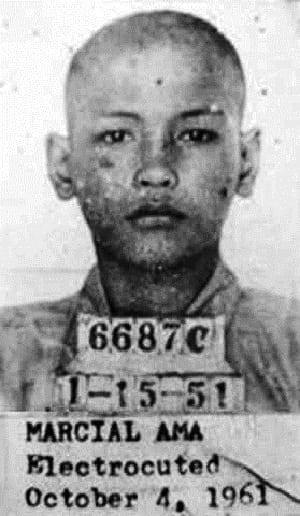Death Penalty
"Death penalty is a war against the community"
Returning violence for violence multiplies violence,adding deeper darkness to a night already devoid of star.
Martin Luther king
History of Death Penalty
Death penalty was set up as a punishment for people who committed crimes. The king of Babylon, Hammurabi in 18th century BC put into the form of a code the death penalty for almost 25 different crimes and murder was not included in them. In 16th century BC Egypt, the first death sentence occurred which was historically recorded where the wrongdoer was ordered to take his own life. Hittite code also practiced death penalty in 14th century BC. Death was made the penalty by Draconian code of Athens in 7th century BC for every crime which was committed. In 5th century death penalty was codified by the Roman Law.
- There are five justifications for implementation of death penalty which are as follows:
- The chances that the offender will return back to the society are reducing to nil.
- Closure for victims’ families.
- Other offenders discourage or deter against the future violations.
- For the offender who commits such serious crimes, death penalty is the appropriate punishment.
- Rightful societal vengeance is also one of the justifications of death penalty.
Source:
https://www.google.com/search?q=hammurabi&source=lnms&tbm=isch&sa=X&ved=0ahUKEwiE5M7n6vLiAhWZd94KHWbKBXYQ_AUIECgB&biw=1024&bih=608#imgrc=QMDU0fHH6_6PKM:
Death Penalty
"There no doubt that the supporters of Death Penalty have more in common with murderers than it's opponents". by: Remy de Gourmont
Human rights are rights inherent to all human beings, regardless of race, sex, nationality, ethnicity, language, religion, or any other status. Human rights include the right to life and liberty, freedom from slavery and torture, freedom of opinion and expression, the right to work and education, and many more. Everyone is entitled to these rights, without discrimination.
International human rights law lays down the obligations of Governments to act in certain ways or to refrain from certain acts, in order to promote and protect human rights and fundamental freedoms of individuals or groups.
One of the great achievements of the United Nations is the creation of a comprehensive body of human rights law—a universal and internationally protected code to which all nations can subscribe and all people aspire. The United Nations has defined a broad range of internationally accepted rights, including civil, cultural, economic, political and social rights. It has also established mechanisms to promote and protect these rights and to assist states in carrying out their responsibilities.
The foundations of this body of law are the Charter of the United Nations and the Universal Declaration of Human Rights, adopted by the General Assembly in 1945 and 1948, respectively. Since then, the United Nations has gradually expanded human rights law to encompass specific standards for women, children, persons with disabilities, minorities and other vulnerable groups, who now possess rights that protect them from discrimination that had long been common in many societies.
Source:https://www.google.com/search?q=death+penalty+in+the+philippines&source=lnms&sa=X&ved=0ahUKEwiQ-7XD4vLiAhVRfXAKHTXeDYkQ_AUICygA&biw=1024&bih=608&dpr=1
https://app.site123.com/manager/wizard.php?w=2274846&from=dash#
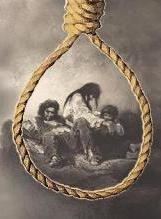
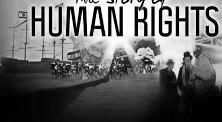
Facts
Death penalty Facts
There are several reasons to abolish death penalty which are discussed as follows:
Executions are carried out at unsteady cost to the taxpayers: It costs much more to execute a person rather than to keep him in the prison throughout the entire life. It is being observed that the death penalty trials are around 20 times more costly than the trials that seek a sentence of life in jail without any possibility of parole.
No credible evidence is there that the capital punishment causes crime: Scientific studies had failed to find out that that executions cause people to commit crime more than seeking a sentence of life in prison. The states where death penalty is not practiced have much less murder rates.
Innocent people are being executed and convicted: The wrong execution of innocent people creates lack of justice which can never be rectifiable. In the last two years it was found that four men had been executed wrongfully for the crime which they did not committed. Always there is a risk of an innocent people to be executed.
Race plays a vital role in deciding who is sentenced to die: The two major factors that decides who lives and who dies are the race of victim and the race of defendant. It was concluded from the report of General Accounting Office in the year 1990 that those people who killed the whites were mostly sentenced to death than those who killed blacks.
The death penalty is asked to be given without aim or purpose at random: The three determining factors in death penalty case where crime is committed are the politics, jurisdiction and the quality of legal counsel. The death penalty is considered as a lethal lottery. Out of 22,000 people who commit crime every year, approximately 150 people are put to death.
Capital punishment goes against every religion: Execution is regarded as immoral by almost all the religious groups although isolated passages of the religious scriptures have given strength to death penalty.
Millions of people spend on death penalty which can be used to help the families of the murder victims: Many families who have lost their loved ones in murder victims feels that neither death penalty will not curse their wounds nor will end their pain. In order to help the families’ funds can be used to put their lives back together crime victim hotlines, counseling, restitution and many other services that addresses their needs.
A large number of countries round the world had given up the use of death penalty, but the consensus has not been formed by the world against the use of death penalty. Every year thousands of people are executed in China, which is the most popular country in the world and it is used regularly by the most powerful country, the US. The use of capital punishment is retained by eighty four countries in the world. The use of death penalty is declining in most of the countries and will be abandoned soon.
Death Penalty in Islam
Islam accepts death penalty. The main point to note is that life is taken by the people by the way of justice and law. In Islam, death penalty is put into practice by the court as punishment for creating serious crimes. But ultimately it is believed that external punishment is in almighty’s hand. According to the Islamic penal code, the non- physical, immaterial part of man, the soul, the immortal part of man which feels and thinks is to save life’s, prevent corruption and promote justice. Islamic philosophy holds a view that severe and cruel punishment should be given to the one who commit serious crimes, damages the individual victims, or utter a threat to destabilize foundation of the society. International murder and Fasad fil-ardh (which means to spread mischief in land) are the two crimes according to the Islamic law which are to be punishable by death.
International murder: The Quran makes laws against the death penalty for murder, though compassion and forgiveness are strongly supported. A choice is given to the murder victim’s family either to declare with force and confidence on death penalty or to forgive the performer to take mandatory compensation for their losses.
Fasaad fi al-ardh: This is the second crime which is being applied for capital punishment. It means spreading ‘mischief in the land’. it can have many different meanings but it generally means those crimes that that affects the whole community and destabilizes the society. Crimes under this include the following:
- Homosexual behavior
- Terrorism
- Adultery
- Treason/ Apostasy (it means when one joins the enemy to fight against the Muslim community leaving faith)
- Land, sea and air privacy
- Rape
There are various methods of Capital punishment like firing squad, stoning, beheading and hanging. One important thing to be noted is that in Islam there is no place for vigilantism- before the punishment is announced, one must properly convict in Islamic court of Law. Thus the court can order the punishments according to the case basis like prison sentences and imposing fines .
Source: https://www.ukessays.com/referencing/
10 Facts about Death Penalty in the Philippines
1.The pre-Spanish Filipinos practiced it,albeit infrequently.

While not capital punishment in the sense that it was not rendered for the sake of the state, the pre-Spanish Filipinos did practice the death penalty. However, they practiced it infrequently at best.
Death sentences were regularly commuted to fines, flogging, or slavery. Out of the three, slavery was the most common form of commutation since the pre-Spanish Filipinos found it more practical to have a slave work in their fields and lands.
And unlike what the proven hoax Code of Kalantiaw would like us to believe, the condemned were not subjected to unusual and cruel punishments such as being eaten by ants or thrown in boiling water. Instead, they were executed via the more-common methods of decapitation and hanging.
2.Spanish also did not use it much either
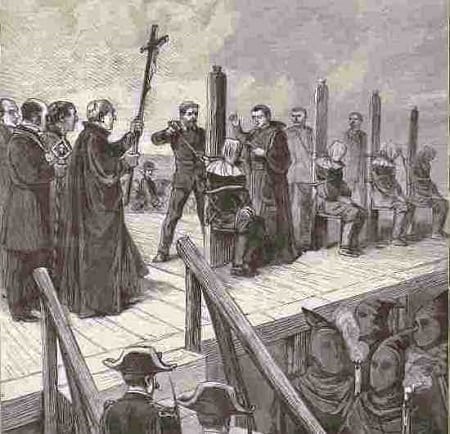
Another misconception about Spanish rule in the Philippines blown way out of proportion is the implementation of the death penalty during their rule. While executions did indeed happen, they only commonly occurred during rebellions and uprisings.
In cases of treason, rebellion, or any other crime which endangered Spanish sovereignty, the death penalty was frequently employed to quell the disturbance
In times of relative peace, however, the Spanish did not bother to employ capital punishment as much. In fact, out of more than 1,700 murder convicts condemned to die from 1840 to 1885, the Spanish only executed 46 of them—an evidence that they were far more concerned with maintaining their authority on the natives than killing them off en masse.
In a twist, it was the Americans rather than the Spanish who enacted more laws (the Sedition, Brigandage, and Flag Laws) mandating the death penalty as a means of suppressing dissent among Filipinos.
3. The Philippines had a club of pro-death penalty judges
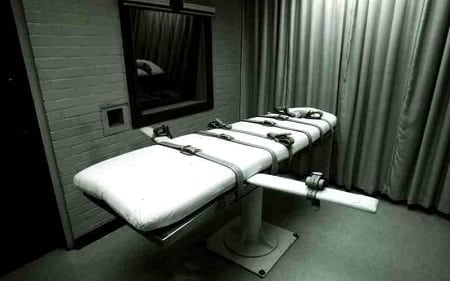
During the periods when the death penalty still operated, there existed a group of judges who strongly advocated capital punishment and who were only too eager to give out the death penalty. Known as the Guillotine Club, the group was founded in 1995 by Quezon City judge Maximiano Asuncion for judges who handed out death sentences.
By his reasoning, if criminals could form syndicates to sow fear among ordinary people, then law-abiding citizens such as judges should be able to put up their own group to scare off criminals.
Asuncion himself was said to have given out seven death sentences during his career. In fact, it was Asuncion who presided over the high-profile case involving Leo Echegaraywhom he subsequently sentenced to death.
In a twist of fate, Asuncion did not live to see the sentence carried out—he died of a heart attack two years before Echegaray’s execution in 1999.
4. The Catholic church was once pro-death penalty
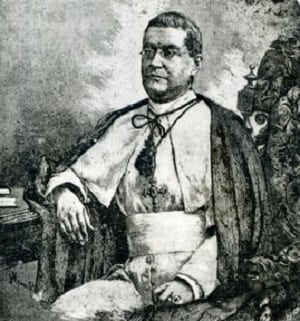
There used to be a time when the Catholic Church actively campaigned for the death penalty. During the Philippine Revolution, Manila Archbishop Bernardino Nozaleda openly called for Filipino rebels to be exterminated by “fire, sword, and wholesale executions.”
With his endorsement, Spanish authorities regularly conducted public executions of Filipino revolutionaries. It can be said Nozaleda was also indirectly responsible for Jose Rizal’s death when he orchestrated the ouster of the conciliatory Governor Ramon Blanco with the iron-fisted Camilo de Polavieja.
Nozaleda also several times attempted to change sides. With the Americans’ arrival, he first appealed to Emilio Aguinaldo for a Spanish-Filipino alliance against what he viewed as a Protestant threat. When the Americans were winning, he also approached them for an alliance but was rebuffed.
Ultimately, even his own people in Spain rejected him—the city of Valencia once denied him entry following his appointment as its archbishop. He resigned shortly thereafter.
5.The Philippines had the world’s second-largest death row population among democracies.
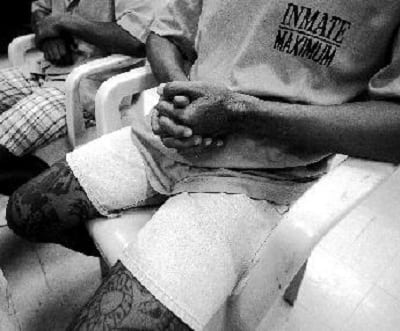
Outside of such states as China and countries in the Middle East, the Philippines—before it abolished the death penalty in 2006—used to have the world’s second-largest population of death row prisoners, pegged at an estimated 1,200 people.
According to Amnesty International, the commutation of those sentences by former President Gloria Arroyo also gave the Philippines the record of having conducted the biggest number of commutations in a single sitting anywhere in the world.
Of course, the democratic country with the largest death row population is none other than the United States. Since 1995 until the present, its death row convicts have averaged 3,000 per year.
6.A governor nearly ended up in the electric chair
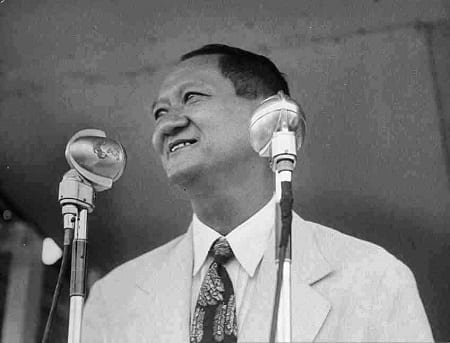
In what would have arguably been one of the biggest upsets against a political dynasty, one governor nearly met his end in the electric chair.
Rafael Lacson, the governor of Negros Occidental who ran the province like his own personal fiefdom from 1949 to 1951, was sentenced to the electric chair in 1954. This was after being found guilty for the murder of Moises Padilla, an opposition candidate who ran for mayor in the town of Magallon in 1951.
Even after being threatened and harassed, Padilla—a war veteran who had the backing of then-Defense Secretary Ramon Magsaysay—continued his run. Even though his candidate won the elections, Lacson ordered the apprehension of Padilla ostensibly on the grounds of sedition and illegal possession of firearms. A few days after his “arrest,” Padilla’s bloodied and bullet-riddled body was found in the town plaza.
The brazenness of the murder spurred Magsaysay himself to personally go to Magallon to pick up Padilla’s body and bring it to Manila for an autopsy and proper burial. In the end, however, Lacson’s death penalty was reduced to life imprisonment due to the needed number of votes coming up short in the Supreme Court.
7. We have executed a minor before.
With the uproar nowadays over the Pangilinan Law which critics say have essentially allowed minors to commit crimes with impunity, a time occurred when the country really did—and could legally—execute a minor since they were considered adults at the time.
In this case, the offender was none other than Marcial “Baby” Ama who was only 16 years old when he was executed via electric chair. At the time, the law considered the legal age for men and women to be 16 and 14 respectively.
Ama himself earned his sentence after leading one of the biggest jail riots in history which resulted in the deaths of nine inmates, one of them having been beheaded.
The Supreme Court imposed the death penalty after finding him guilty for stabbing to death a man named Almario Bautista during the riot.
8. We nearly employed the gas chamber instead of lethal injection.
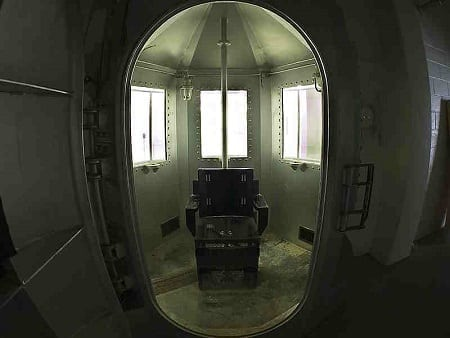
Were it not for the Americans’ refusal to give us one, we would have ended up using the gas chamber—which is still legal in four US states by the way—instead of lethal injection.
When President Fidel Ramos brought back the death penalty with Republic Act 7659 in 1993, he envisioned the gas chamber to replace the electric chair as stipulated in the third paragraph of Article 81 “as soon as facilities are provided by the Bureau of Prisons.”
However, the Americans—for one reason or another—rejected Ramos’ bid to purchase the necessary materials from them, although they did successfully convince him to buy the equipment for lethal injection instead. As a result, the law had to be changed again to provide for lethal injection as the country’s method of execution.
9.Only the Philippines and the US have ever used the electric chair.

Believe it or not, only two countries in the world have ever used the electric chair—the United States and the Philippines (in fact, it is still being used in certain US states today).
The Philippines adopted electrocution after the US brought in an electric chair in 1926. The country continued to use the chair until 1976 when the firing squad replaced it as the preferred method of execution.
In its 50-year career, the electric chair took the lives of 86 death row prisoners, among them the three rapists of actress Maggie dela Riva, Baby Ama, and Manuel Roxas’ would-be assassin Julio Guillen.
10.Only the Philippines and the US have ever used the electric chair.

While the Philippines has had no incident of botched executions, it did have one instance where a busy telephone line resulted in a convict’s execution before it could have been postponed.Minutes before the scheduled execution of convicted rapist Eduardo Agbayani on January 25, 1999, President Joseph Estrada received a call from his spiritual adviser Bishop Teodoro Bacani telling him Agbayani’s three daughters—his victims—were willing to forgive him. Estrada then tried calling prison officials to stop the execution but only received fax tones and busy signals.It was later discovered that Estrada did not know he was not using a direct line specially installed for the very purpose of stopping an execution. When he did manage to connect at 3:12 PM, Agbayani was unfortunately already dead at 3:11 PM—a mere difference of a single minute.
Source: https://www.ukessays.com/referencing/
